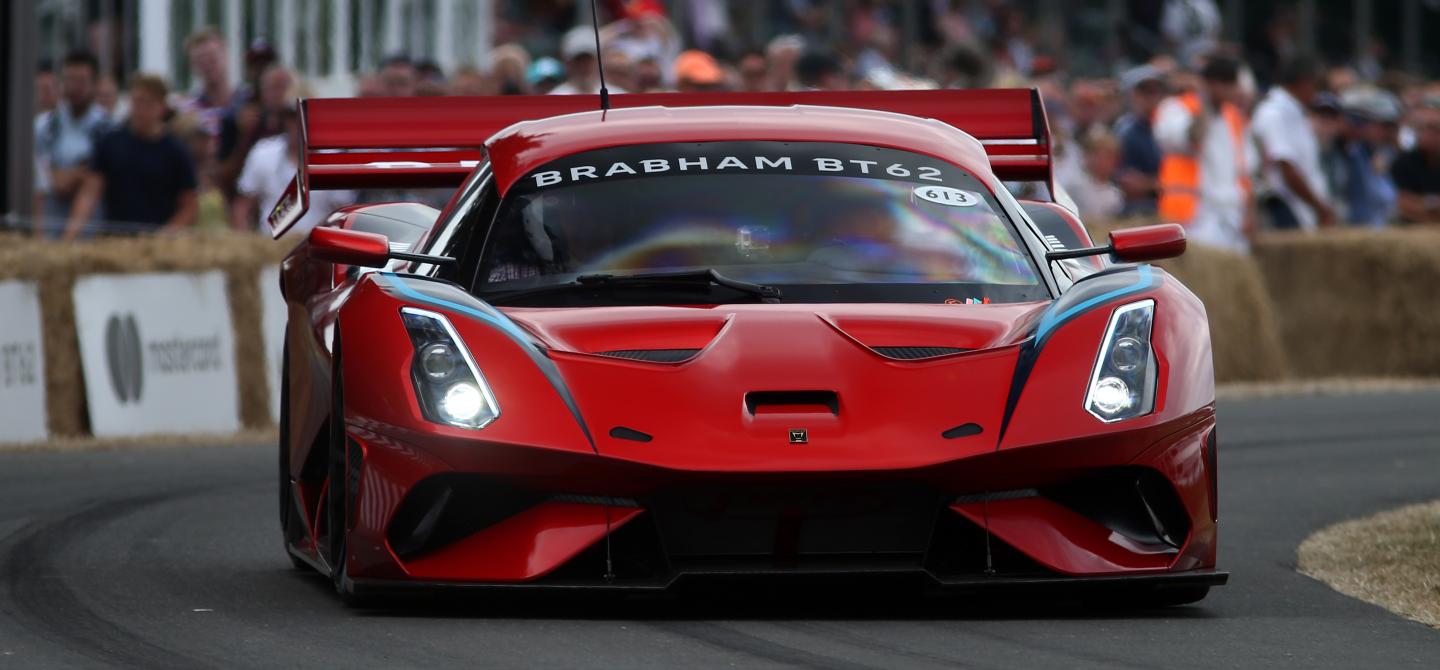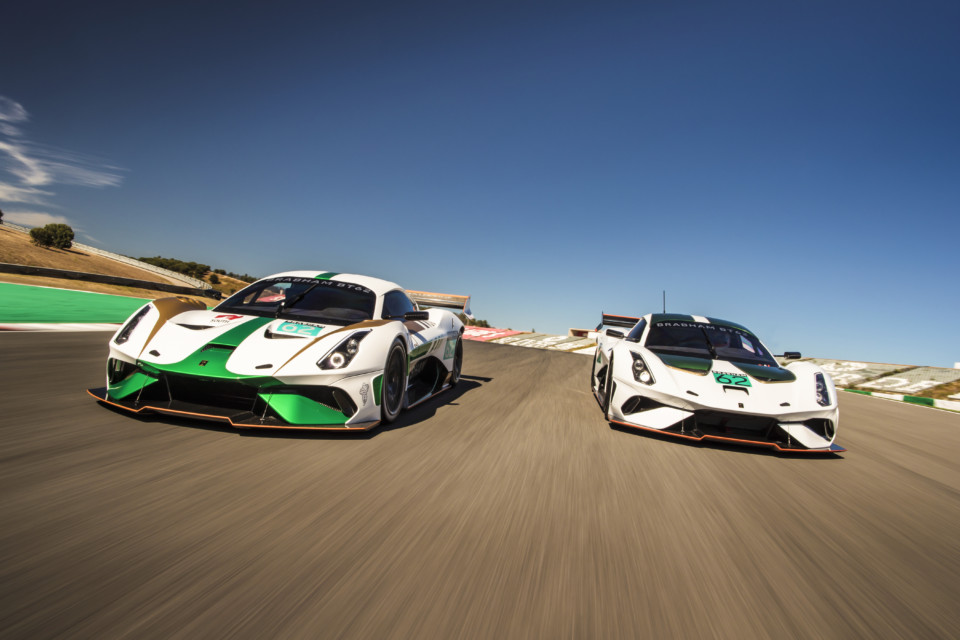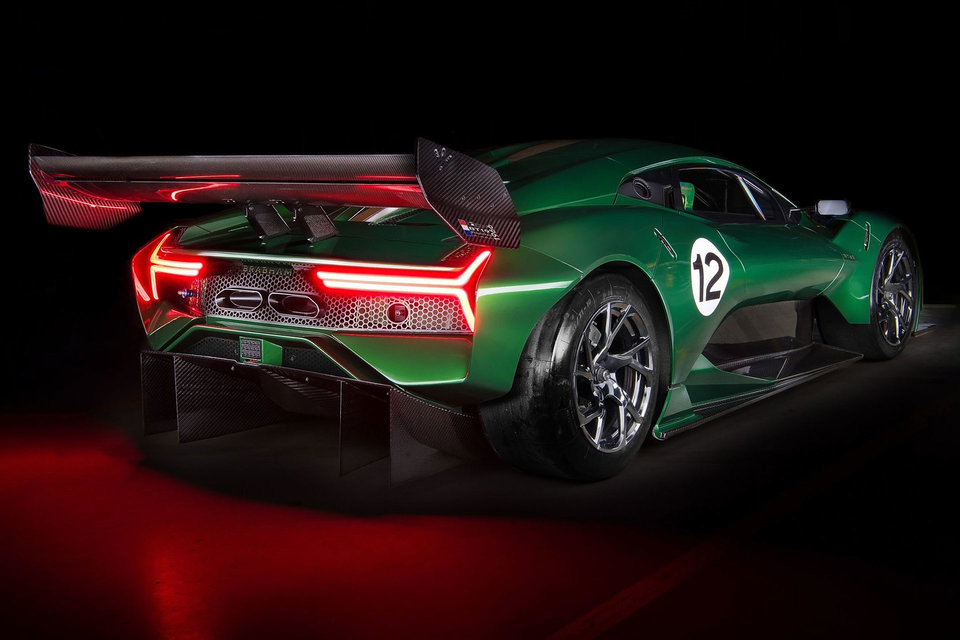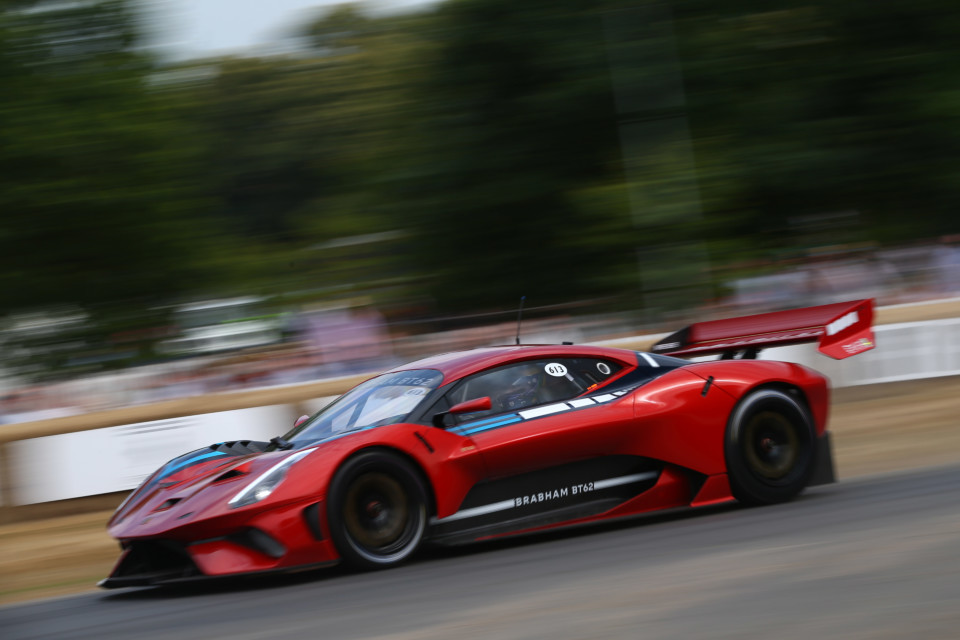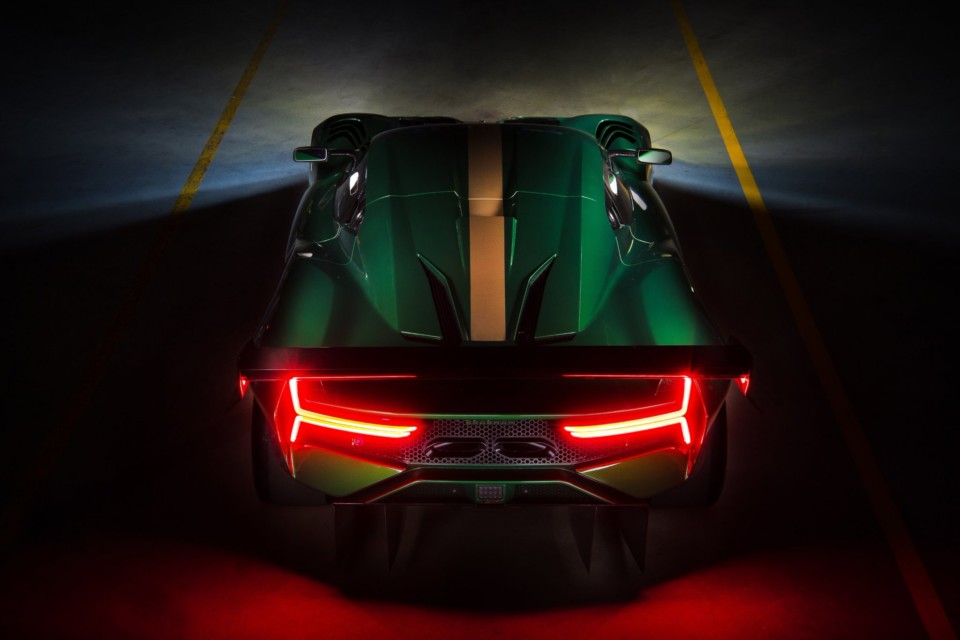In the last few years, the biggest sportscar marques have unveiled exclusive, track-only hypercars to their most discerning and established clients. McLaren, Ferrari, Aston Martin, and Pagani have all shown what serious machines they are capable of creating when they don’t need to concern themselves with road manners—the McLaren Senna, the Ferrari FXX-K, the Aston Martin Vulcan, and the Pagani Huayra BC are all lightened, stripped, and sharpened versions of their flagship road cars that encourage their owners to pummel the track and search for those last vital tenths.
As these exclusive track toys are built by large companies that primarily sell road cars to the public, several questions are raised. Are they as focused racing cars, or are they the pinnacle of small-batch, hardcore hypercars? Where is the difference between these two groups?
As Jack Brabham was the only Formula 1 driver to become a champion in a car of his own design, David Brabham sets to follow in his father’s footsteps by competing with his BT62, modified to meet class regulations, in the 24 Hours of Le Mans.
With a long-term plan in place and a phased product development program already underway, the company’s ultimate goal is to see the iconic Brabham name return once again to compete on the race track.
The Ferrari FXX-K has to appeal to an ultra-discerning client who wants not only top-of-the-range performance but has to make some compromises for the sports-luxury feel the brand is known for. When the FXX-K is compared to the interior of an F40, a road-going racecar with exposed glue and shoddy interior work, the FXX-K’s interior feels focused but sumptuous at the same time. It begs the question—with the complexity of these cars and the size of the committees which build them, is something lost?
?t=3m8s
As Chris Harris mentioned in a recent review of the FXX-K, it “feels like a fast road car. It doesn’t feel like a racing car; it doesn’t have that otherworldly grip.” Those words might stun some who, seeing the incredible statistics these cars possess, would imagine there’s simply nothing more extreme.
A Track Car Made Exclusively by Racers, for Racers
A recent joiner of this elite group might bring slightly more to the party than its established rivals do. After all, a racing pedigree associated with names like Piquet, Lauda, Gurney, and Hill, suggested that Brabham would be bringing out the big guns when they announced their BT62 earlier this year.
Brabham has primarily only built open-wheel racing cars throughout their illustrious past and never had to succumb much to the compromises of bureaucracy or road manners, the BT62 promises a level of focus and performance not typically enjoyed by the general public—nor even the most avid aficionado. That means the BT62 is built on a unique concept.
Often machines of this intent within the price range offered, are, to some extent, designed to appeal to a type of person who needs the biggest, the best, and the most exclusive. Think caviar-inhaling mogul with a pair of Bengal tigers in their backyard. It’s not fair to compare the BT62 to, say, a Radical, but the similarities might be closer with the shed-built, track-day-special than with the multi-million dollar flagship-turned-track car.
An Emphasis on Lap Times and Involvement
Focusing on weight and grip over headline-generating horsepower figures, the BT62 weighs only 2,142 pounds and doesn’t need much to push it around.
However, that didn’t stop Brabham from sourcing a naturally-aspirated, 5.4-liter, quad-cam V8 that rips and snorts like a bonafide V8 Supercar—Australia’s fastest racing machine. The motor produces a smidgen over 700 horsepower and 492 lb-ft of torque via an extensive re-tune from the undisclosed supplier. Power is then driven through a Holinger six-speed sequential gearbox, complete with paddles and flat-shifting, that helps the cars acceleration rival any supercar on the market today—turbos or no turbos.
Being naturally aspirated, the BT62’s motor makes the driving experience more visceral than most force-fed rivals can provide, and arguably emits a better engine note, which, in this world of turbocharged sports cars flooding the market, is certainly appreciated. Its bark is complemented by the whine and clatter of a proper racing gearbox. Honestly, when a powertrain provides this timeless soundtrack, concerns about outright power go right out the window—at least to the real racer.
Besides, the focus of the car is not on outrageous power outputs or straightline speeds, but lap times. While the FXX-K boasts 350 horsepower more than the BT62, it also weighs nearly 400 pounds more—and only develops half the aerodynamic grip of the Brabham. Therein lies the difference in between the two cars’ design ethos. While those two statistics might not turn heads quite as a four-figure power output does, they certainly make themselves known on the track.
Brabham’s brainchild was conceived as an unrestricted GT car. Without a sanctioning body limiting the amount of downforce generated, the BT62 has a comprehensive aerodynamic package that generates approximately 2,645 pounds of downforce.
Aero includes a front splitter, canards, aeroblades, barge boards, rear diffuser, and dual-element rear wing, all of which are made from carbon fiber. The incredible level of grip provides a unique driving experience comparable to a mid-2000s GT1 car and a contemporary LMP machine, according to Brabham.
Remaining Stylish—For a Racing Car
By adhering to the accepted proportions of a sports car, the shark-like BT62 is a very striking machine; somewhere between a Ford GT and a Ferrari 488. While the designers of the BT62 still value aerodynamic performance over fashion points, they don’t scoff at the idea of style. After all, slinky lines sell more cars than drag and downforce figures do.
The Right Selection of Racing Parts
Carbon makes up most of the body, while a “tubular metallic architecture” provides the car with the rigidity needed. Center-lock wheels measuring 18 inches in diameter sit inside the carbon-kevlar wheel housings, and come wrapped in Michelin rubber.
Massive six-piston Brembo racing brakes, measuring 380 and 355 mm, front and rear respectively, allow the driver to brake as late as possible. These brakes utilize carbon pads acting on carbon rotors; a technology introduced by Brabham in 1976. The footwork is further improved by double wishbone setup at both axles, pushrod-actuated Öhlins TTX dampers, Brabham’s own bump control system, and adjustable anti-roll bars. For quick tire changes, an integrated air-jack system lifts the car.
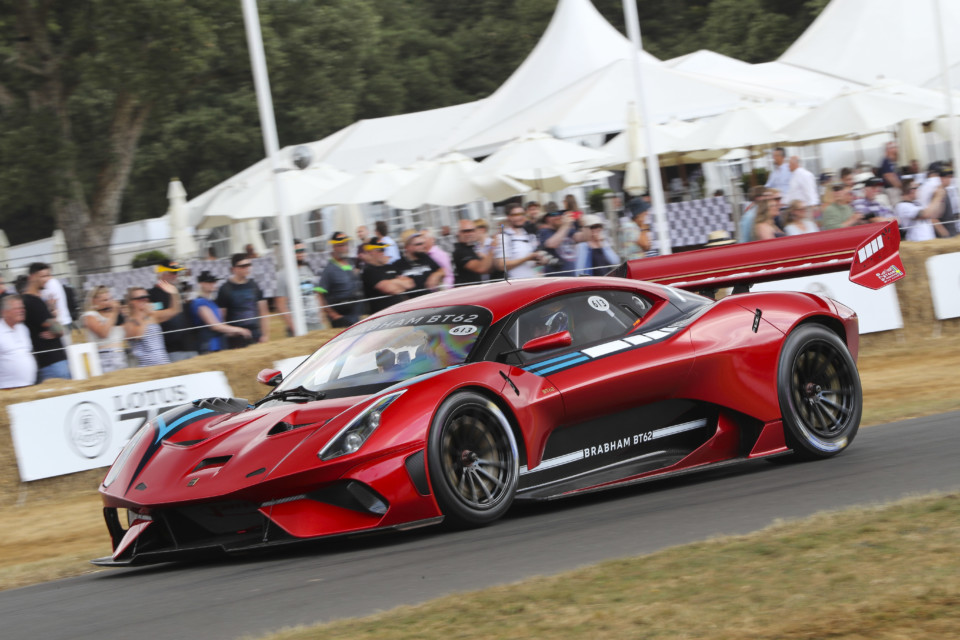
Chassis number BT62/19 pays homage to Brabham’s iconic BT46B ‘fan car’ and the team’s 19th F1 victory. Photo credit: Goodwood
A Racing Driver’s Education
Since the car is devoid of electronic nannies, save for adjustable traction control and the adjustable ABS, a skilled hand is needed. So, included in the $1.4 million price for the BT62 is admission to the Brabham Driver Development Program, which offers a custom-tailored program covering every conceivable aspect of going fast.
The course challenges the owners physically and emotionally to turn them into skilled drivers capable of extracting every iota of performance from a very demanding car. Their education involves instruction from engineers, mentors, and professional drivers.
On-vehicle data acquisition monitors and analyzes the driver and car performance to provide immediate feedback on progress. Additionally, biometric and emotional monitoring accelerates the development process.
As owners progress through the program, they will be introduced to the demands of slick tires, then onto mastering downforce and learning to trust the car at higher speeds. Furthermore, “this engagement through the program means that owners effectively become part of the test team; contributing to future vehicle development through their feedback during the program,” as mentioned on the site. Clearly, Brabham is just as interested in teaching their customers on how to driver as they are in selling a boutique racing car. Well-heeled dilettantes need not apply.
Form Following Function
Driver involvement is further improved by the snug, GT3-like interior complete with a fixed carbon bucket, a six-point harness, a removable carbon wheel, and an adjustable pedal box. These safety devices also provide the right ergonomics to establish a stronger link between the car and the driver. As a result, the driver plays a far more significant role in controlling the vehicle. “There is a greater sense of reward rather than yet more speed and power being managed by electronics,” Brabham said.
Yet, the interior is meant to be aesthetically appealing, and not just functional. Alcantara-covered dash top, seat insert, and door cards; leather pull straps; and a center console switch panel and seat surround painted to match the exterior color brings a few swanky touches to differentiate it from completely frill-free racing car. The BT62, unlike most cars this focused, still retains several frills to make it a track car with class; primarily purposeful but still classy.
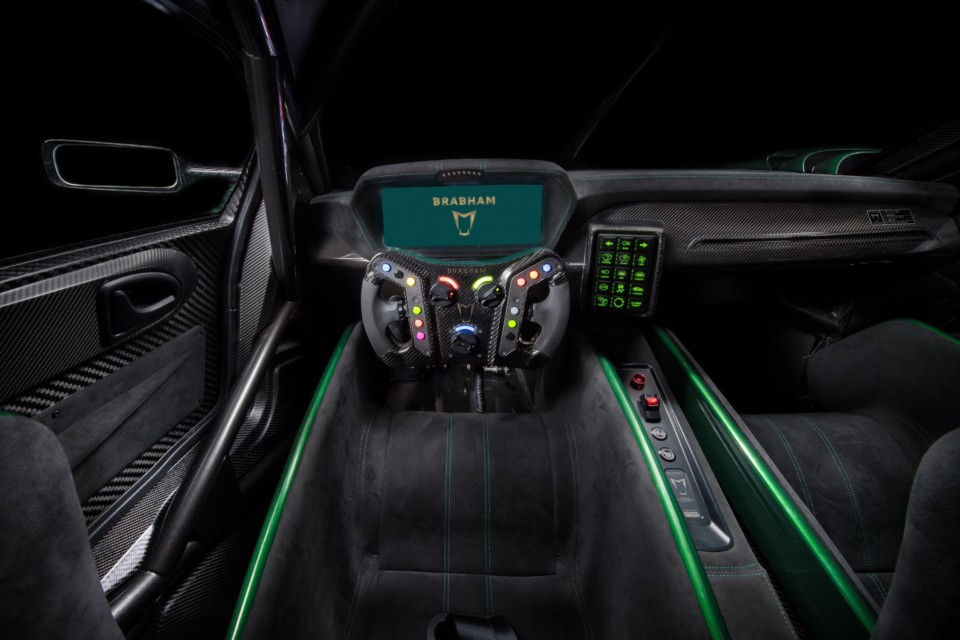
Even with the GT3-car ambiance, the BT62 retains a few stylish touches to blend function and form like no other track car. Photo credit: Brabham Automotive
However, even this level of focus deterred several prospective clients. For those put off by the hardcore nature of the BT62, Brabham recently notified its clients that it will road-certify the car. Though the details of what this entails are still uncertain, it means that potential owners can take their track toy to the local Cars & Coffee meets—provided they’re willing to put up with the ride, visibility, and racing gearbox in stoplight-to-stoplight driving.
A Place in Racing’s History and Future
While Brabham was once a name that carried great weight in the world of Formula 1, it hasn’t been a player in the game since the 1992 Hungarian Grand Prix. The sport has grown to be cost-prohibitive for such small companies, so the chances of re-entry are slim to none. However, there are other categories that would welcome a small company like Brabham—and this car might serve as the perfect vehicle to bring their name back into the world of professional motorsport.
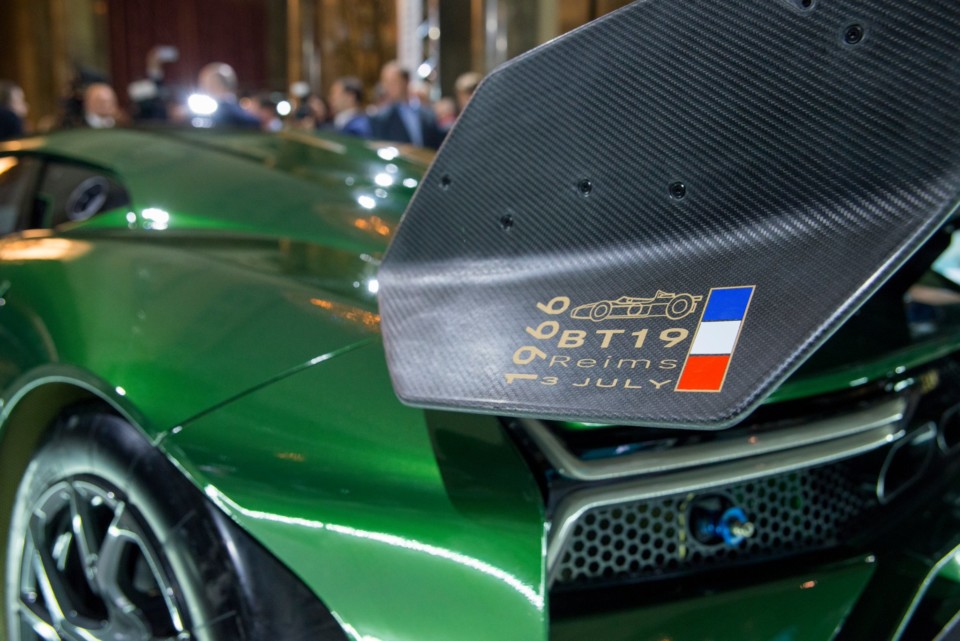
Details on the wing endplates commemorate Brabham’s Grand Prix wins. Photo credit: Brabham Automotive
“I set out twelve years ago to re-establish the iconic Brabham name, determined to see it return to global competition. My father had an incredible determination to succeed and, like him, I’ve worked tirelessly through this time, drawing on my experience as a racing driver, leader and mentor, never once losing sight of that goal. It’s been challenging at times, but what we have achieved is simply staggering. Today’s unveiling makes me feel incredibly proud as the Brabham legacy enters a new era,” said David Brabham.
With a unique combination of function and form, an emphasis on driver involvement, and a strong chance of a future in motorsport, the BT62 is arguably the toughest of its prestigious breed. Somehow, I can’t imagine the other big marques taking their flagships to major races any time soon.


